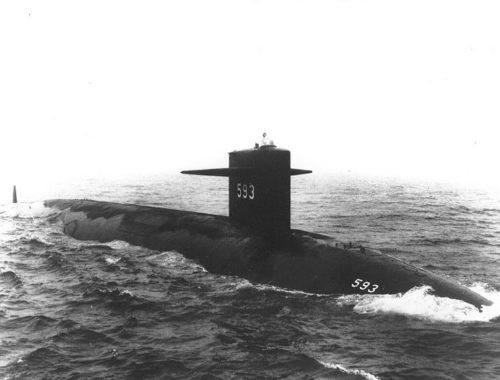An international agreement did not create the International Tribunal for the Far East, but it nonetheless emerged from international agreements to try Japanese war criminals. In July 1945, China, the United Kingdom, and the United States signed the Potsdam Declaration, in which they demanded Japan’s “unconditional surrender” and stated that “stern justice shall be meted out to all war criminals.” When the Potsdam Declaration was signed, the war in Europe ended, but the war with Japan continued. The Soviet Union did not sign the declaration because it did not declare war on Japan until weeks later, when the United States dropped the second atomic bomb at Nagasaki. Japan surrendered six days later, on August 14, 1945.
In December 1945, the Soviet Union, the United Kingdom, and the United States (with concurrence from China) agreed to a basic structure for the occupation of Japan. As Supreme Commander of the Allied Powers, General MacArthur was granted authority to implement the Terms of Surrender, the occupation and control of Japan, and all directives supplementary thereto.”
In January 1946, General MacArthur issued a special proclamation that established IMTFE including the Charter for IMTFE, like the Nuremberg Charter, laying out the composition, jurisdiction, and functions of the tribunal.
MacArthur appointed judges to IMTFE from the countries that had signed Japan’s surrender document. IMTFE had jurisdiction over crimes that occurred over a greater period of time, from the 1931 Japanese invasion of Manchuria to Japan’s 1945 surrender.
IMTFE involved prosecution of nine senior Japanese political leaders and eighteen military leaders. Emperor Hirohito and other members of the imperial family were not indicted. In fact, the Allied powers permitted Hirohito to retain his position on the throne, but with diminished status.
The Tokyo War Crimes Trials took place from May 1946 to November 1948. The IMTFE found all remaining defendants guilty and sentenced them to punishments ranging from death to seven years’ imprisonment; two defendants died during the trial.
After the Nuremberg and Tokyo War Crimes trials, additional trials were held to try “minor” war criminals. These subsequent trials, however, were not held by international tribunals but instead by domestic courts or by tribunals operated by a single Allied power, such as military commissions. In Germany, for example, each of the Allied powers held trials for alleged war criminals found within their respective zones of occupation. The United States held twelve such trials from 1945 to 1949, each of which combined defendants who were accused of similar acts or had participated in related events. These trials also were held in Nuremberg and thus became known informally as the “subsequent Nuremberg trials.” In Japan, several additional trials were held in cities outside Tokyo.
@japanesewarcrimes
#invasionofmanchuria, #nurembergrules, #macarthur, #warcrimes






